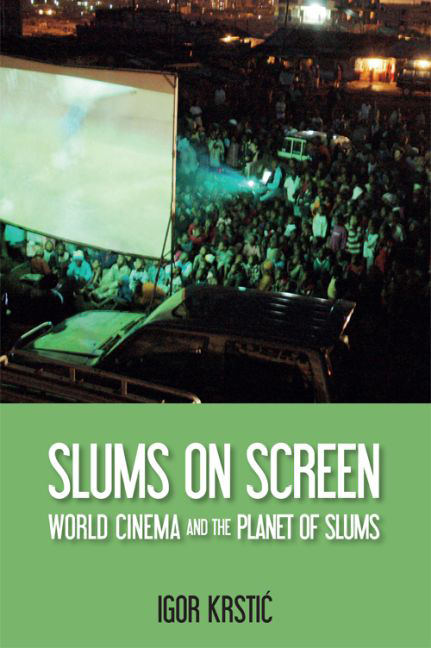Book contents
- Frontmatter
- Contents
- List of Figures
- Acknowledgements
- Introduction
- 1 Slums on and off Screen
- Part One Global Currents
- 2 Sensational Remediations
- 3 Documentary Mappings
- 4 Neorealist Narratives
- 5 Third Docufictions
- 6 Postmodern Bricolages
- 7 Digital Realisms
- Part Two Local Expressions
- Conclusion
- Bibliography
- Index
6 - Postmodern Bricolages
from Part One - Global Currents
- Frontmatter
- Contents
- List of Figures
- Acknowledgements
- Introduction
- 1 Slums on and off Screen
- Part One Global Currents
- 2 Sensational Remediations
- 3 Documentary Mappings
- 4 Neorealist Narratives
- 5 Third Docufictions
- 6 Postmodern Bricolages
- 7 Digital Realisms
- Part Two Local Expressions
- Conclusion
- Bibliography
- Index
Summary
How can cinema effectively speak about people's experiences in a world saturated by manipulated images?
Ismail XavierA bride turns towards the camera and we see her face up close. The title of the film is superimposed on this image, as well as the announcement that we are about to see a ‘ljubavni film’ … a love story. Ironically, however, the next scene shows the exact opposite of what we would expect from a romantic love story. The bride insults her groom, who lies motionless on a pushcart. He drank too much. ‘You destroyed my life’, she screams at him. The camera follows this tragicomic wedding procession until it stops in front of a man with very bad teeth. He carries a broken umbrella, but it is not raining. In the background we see and hear geese, while the man looks straight into the camera and addresses us directly. It appears that he has escaped from a psychiatric asylum: ‘They are poisoning my brain – they want to destroy my life. But I fled. I am not insane!’ He then talks about his people, ‘the Gypsies’, and how God has abandoned them. The title sequence sets in. A long take in the form of an uncut tracking shot introduces us to the film's producers, actors and, in particular, to its main setting: Skopje's Šuto Orizari. The slow-moving camera first follows the geese and then several characters as they criss-cross each other in the neighbourhood's dirt-covered streets. We see a boy pulling a sheep, a musical band on a cart that consists of a violinist and an accordionist, then a gambler strolling sluggishly away from a group of card players after losing all his money (another ‘destroyed life’). Finally, a well-dressed man who is dragging a pig across the frame appears and is replaced, once again, by the bizarre wedding procession that opened the film. A wild mixture of disparate events, things, sounds, people and animals are put together in one single shot; a kaleidoscopic pastiche of various Roma stereotypes or familiar sights that are observable in any other poverty-stricken neighbourhood of our dirt-covered ‘planet of slums’?
- Type
- Chapter
- Information
- Slums on ScreenWorld Cinema and the Planet of Slums, pp. 140 - 163Publisher: Edinburgh University PressPrint publication year: 2016



